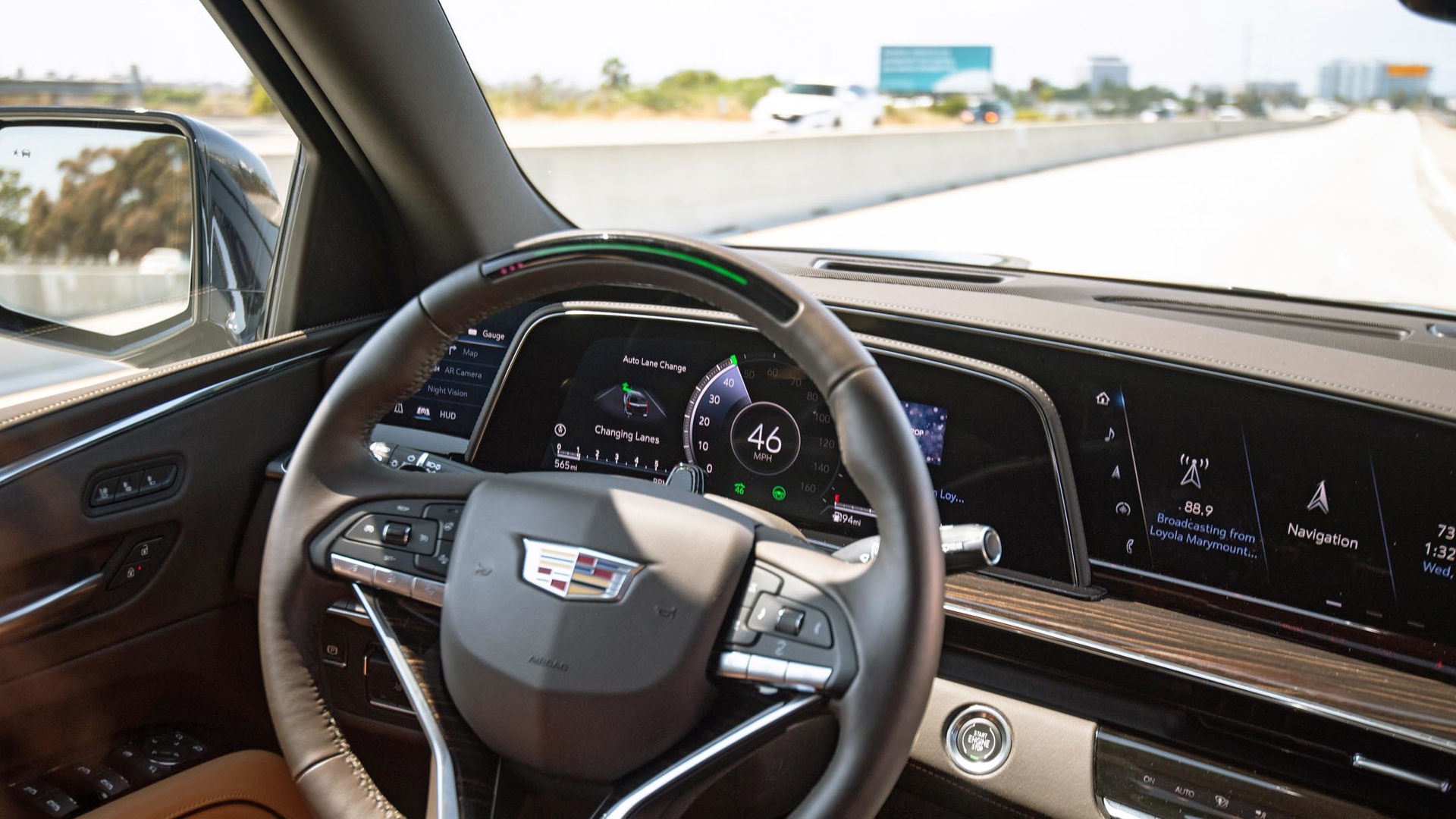Technology has never advanced at such a dizzying rate than it does today. Smartphones are obsolete within roughly half the lifespan of a typical pair of socks. Robotics have automated everything from vacuuming to mowing the lawn, and remember when the only way you could listen to music at home was by purchasing the whole album from a brick-and-mortar store?
Nowhere is the tech explosion more evident than inside a contemporary car, truck, or SUV, and AutoTrader’s collective of more than 20 automotive experts from all across the country have spent countless hours evaluating and reporting on cars and the endless flow of advancements within them.
After considering every major new feature or technology released in the last year designed to make cars safer, our judges have voted for GM’s Super Cruise 2.0 as the winner of our inaugural Best New Safety Innovation Award for 2022. The technology can be found in the Cadillac CT4 and CT5 sedans, plus the full-sized Escalade SUV. It’s also featured in certain models of the Chevrolet Bolt EUV, which brings the technology to a much more mainstream audience.
Super Cruise is the name given to GM’s advanced adaptive cruise control and lane-keeping system, but it has been enhanced to require less driver input. To put it another way, Super Cruise helps take much of the burden of highway driving off the driver, making it safer in the process.
A core development added to this second-generation of Super Cruise is that it is designed to work without a driver’s hands on the steering wheel. Most similar systems require a driver’s hands to be on the wheel at all times, but Super Cruise is unique in that it enables fully hands-free driving under certain circumstances.
Super Cruise 2.0 is also able to handle lane changes with only a tap of the turn signal to let the vehicle know the driver would like to swap lanes. After scanning the space around the vehicle, calculating not only the room needed to make the lane change, but also the speed of approaching vehicles, it will execute the move, fluidly and precisely.
Super Cruise manages speed control including braking and acceleration, plus steering, from stop-and-go traffic, up to elevated cruising speeds, with little to no direct driver input, but it’s only available on a series of pre-programmed highways. It’s a pretty extensive list, though, with more than 320,000 kilometres of roadways carefully mapped with LiDAR and regularly updated.
By restricting Super Cruise 2.0’s functional areas, Cadillac is able to create a far safer and reliable system than competitive systems like Tesla’s Autopilot, which requires a driver to maintain contact with the steering wheel.
Super Cruise does require a driver to maintain awareness of their surroundings, and there’s a sophisticated sensor to keep a careful watch on the driver’s eyes and ensure they’re paying attention to the road ahead. Plus, where systems like Tesla’s now rely solely on cameras, Cadillac has built in redundancies with a complex set of sensors including cameras, and both long- and short-range radar, front and rear, to carefully measure distances around the vehicle.
AutoTrader’s experts have been thoroughly impressed with the effectiveness of Super Cruise, as its operation has been flawless in our experience.
As reported in our review of the system, when activated, “it operates as promised, resulting in smooth, natural-feeling on-road operation resembling an astute and reasonably conscientious driver.” The same can rarely be said for many competitive systems.
All of this may seem like a fun party trick, but how does Super Cruise apply to safety? First of all, the myriad sensors offer unwavering vigilance of the vehicle’s surroundings without distraction. Super Cruise isn’t tempted to check its text messages or eat a sandwich while gliding down the highway at 110 km/h the way a driver might be, so the vehicle maintains a constant safe distance from other vehicles or obstacles.
Next, the assistance in driving reduces a driver’s stress load behind the wheel, helping to maintain a calmer and more relaxed pilot. Using sensors to confirm a driver is paying attention also stops them from engaging in potentially risky behaviour while using the technology.
Finally, Super Cruise 2.0 can dramatically reduce the chance of driver-error lane-change impacts thanks to the precision of its spatial measurements ensuring adequate space is available before venturing out of the lane.
The tidal wave of technological advancements washing over the auto industry is remarkable, and as our roadways are made safer for fellow motorists and pedestrians alike, we are all benefitting dramatically. The other finalists for the award this year include the Genesis radar-based occupant alert system, Mercedes-Benz PRE-SAFE Impulse Side, Lexus Safety System+ 3.0, and Ford BlueCruise, and they each offer brilliant contributions toward making automotive travel safer.
Ultimately, GM’s Super Cruise 2.0 provides a well-executed system that offers both improved safety and makes the task of driving easier on the driver, earning it this year’s award for the Best New Safety Innovation.

